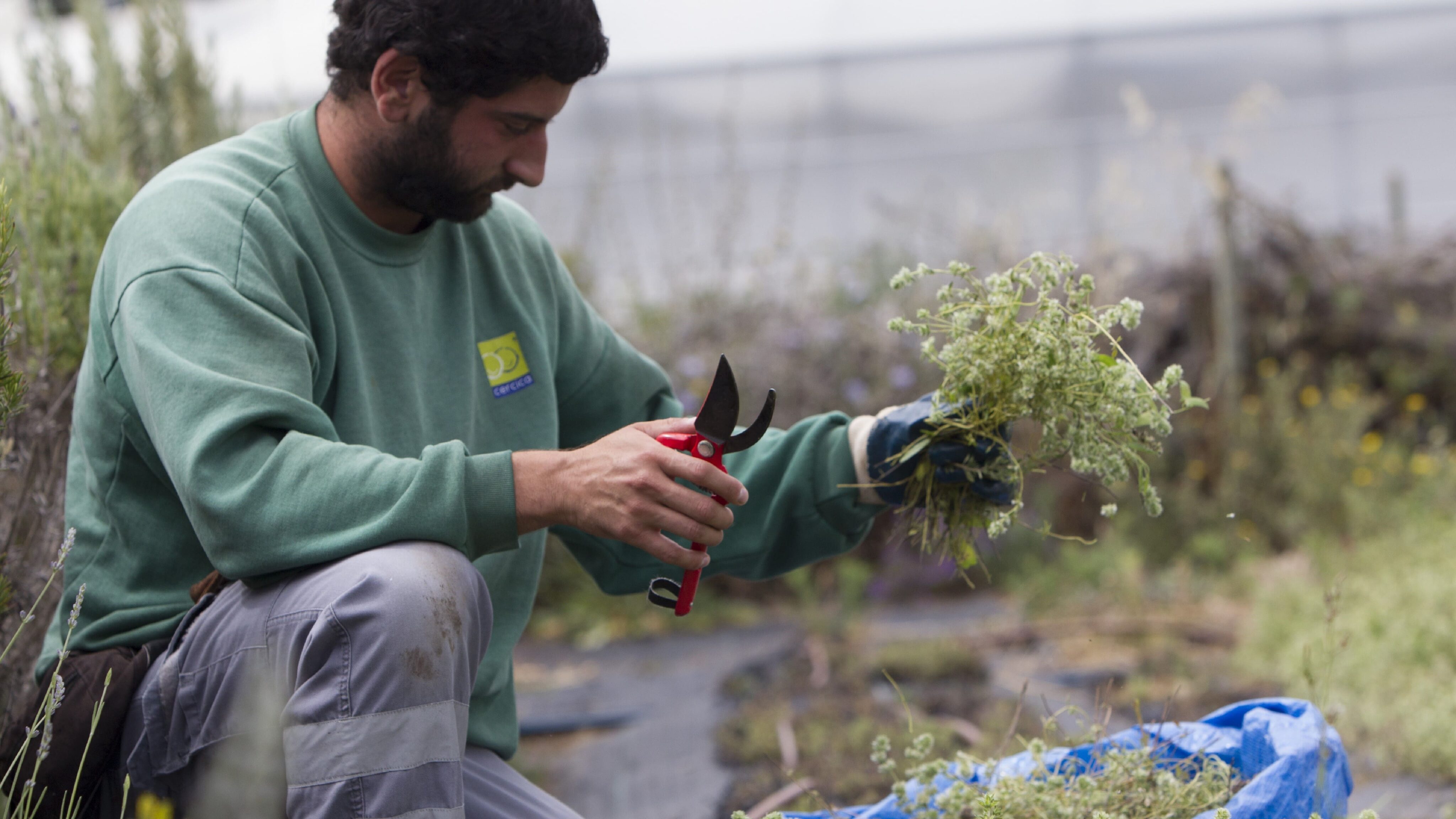Organic bela-luz thyme
It thrives in well-drained soil with low humidity and loves the sun. It withstands extreme weather and is very resistant to pests and diseases.This is the profile of bela-luz thyme, also known as green salt, pure salt and wild marjoram. This evergreen shrub, which is somewhat underrated in Portugal – despite it being indigenous to the Iberian Peninsula! – is at the heart of an investment in organic farming by Cooperativa para a Educação e Reabilitação de Cidadãos Inadaptados de Cascais (Cooperative for the Education and Rehabilitation of Maladjusted Citizens of Cascais – CERCICA), located in Estoril, on the outskirts of Lisbon.
The project began in 2012 and research was conducted for three years in partnership with Instituto de Investigação Científica e Tropical (Tropical and Scientific Research Institute) and Consulai (an agrifood consulting company) to evaluate and prepare the 5-hectare estate for cultivation of aromatic and medicinal plants. The first crops chosen were bela-luz thyme and Stevia Rebaudiana as they are salt and sugar substitutes and, therefore, are marketable.
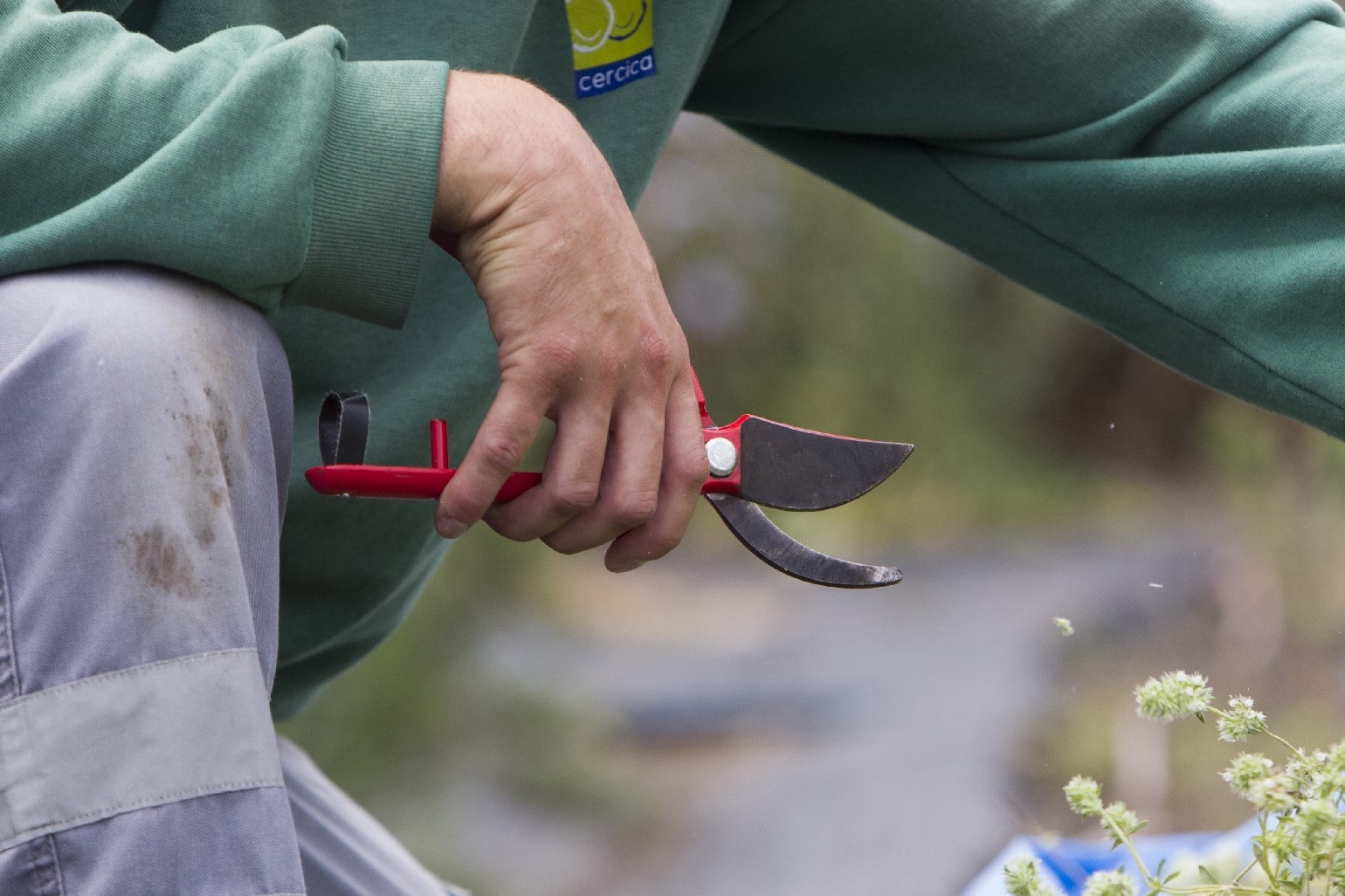
Harvesting bela-luz thyme
The first large-scale bela-luz thyme plantation was implemented in 2014. “At the time, we bought several specimens of the mother-plant, from a certified nursery, and started placing stakes in trays for them to take root. We called this process the ‘hot bed’ because the trays were heated,” explained Luísa Simões. The agricultural engineer from Cerplant (a spin-off from CERCICA that provides gardening services) explains that these trays are used for rooting thyme, which is then potted and later planted. A weed barrier fabric and drip irrigation system is used. Luísa Simões states that “in addition to controlling possible pests, the thyme is also fed organic fertiliser once a year”.
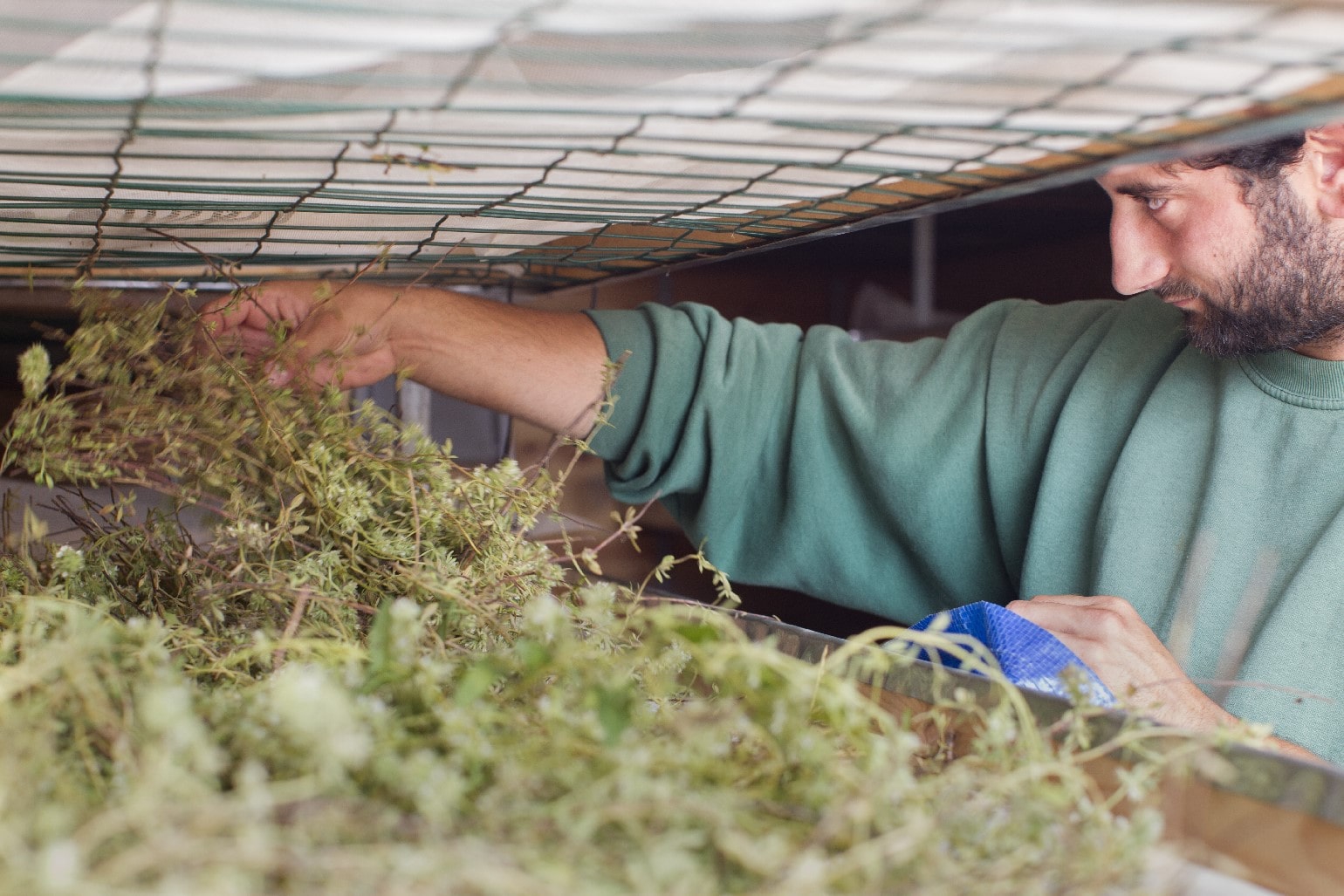
Bela-luz thyme drying in the artisanal solar dryer
An artisanal solar dryer made from a shipping container is used to dry the thyme.
Bela-luz thyme was planted five years ago and is now harvested three to four times a year. “As soon as it is 20 cm tall, it is cut back hard and dried. An artisanal solar dryer made from a shipping container is used to dry the thyme. The drying process depends on the weather and can take anywhere from between three to fifteen days,” explains Luísa Simões.
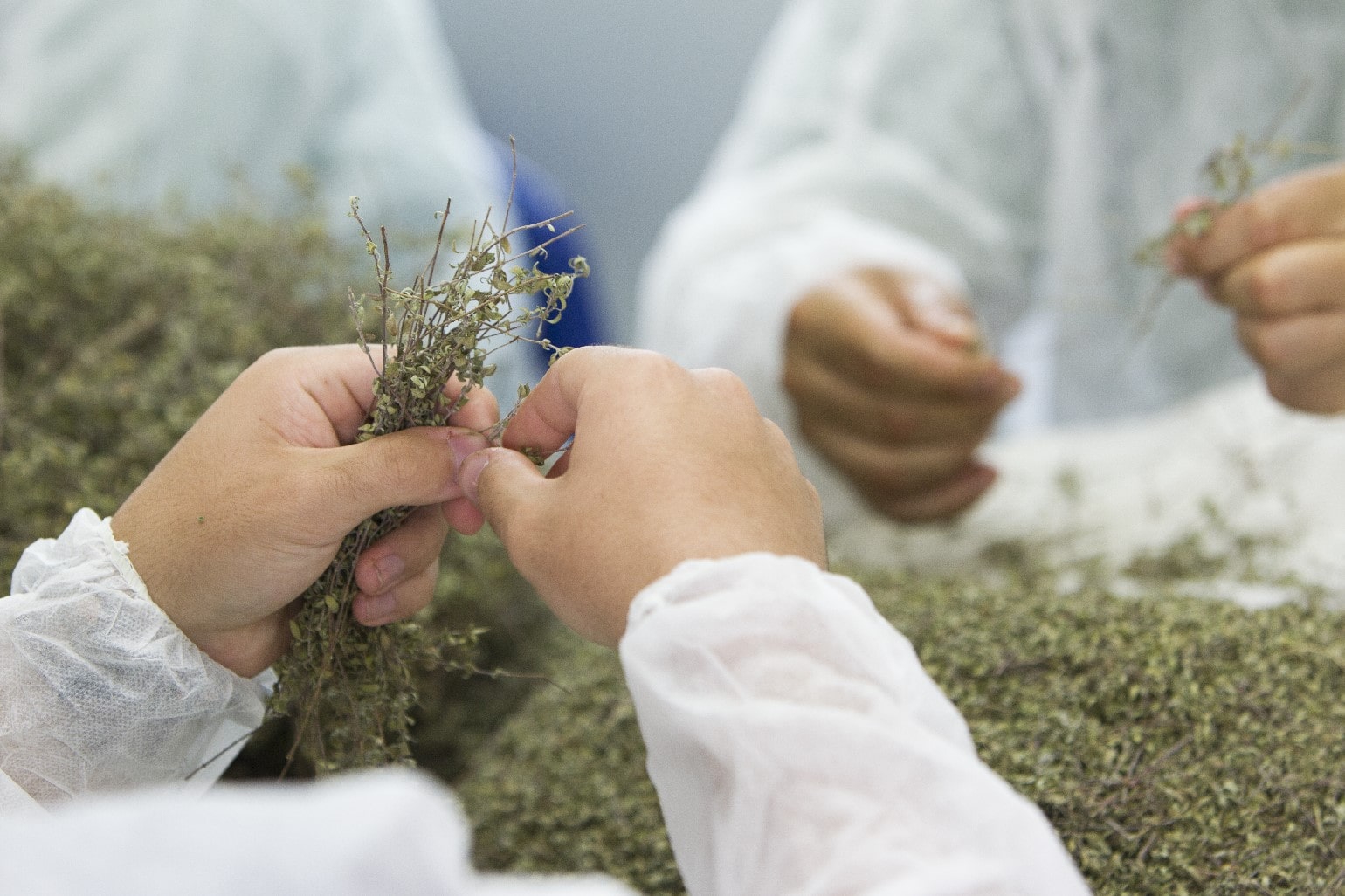
Stripping the leaves of bela-luz thyme
Approximately 15 people tend to and harvest the bela-luz thyme, but this number increases to 70 when it comes to stripping the leaves and packaging. Thyme packages are available in 1 kg bags for the catering sector and large bags for sale in bulk for exporting, together with other producers. “There are also small cellophane packages or tins for sale in stores,” which can be purchased at CerGarden (in Estoril) or at Pingo Doce in São João do Estoril.
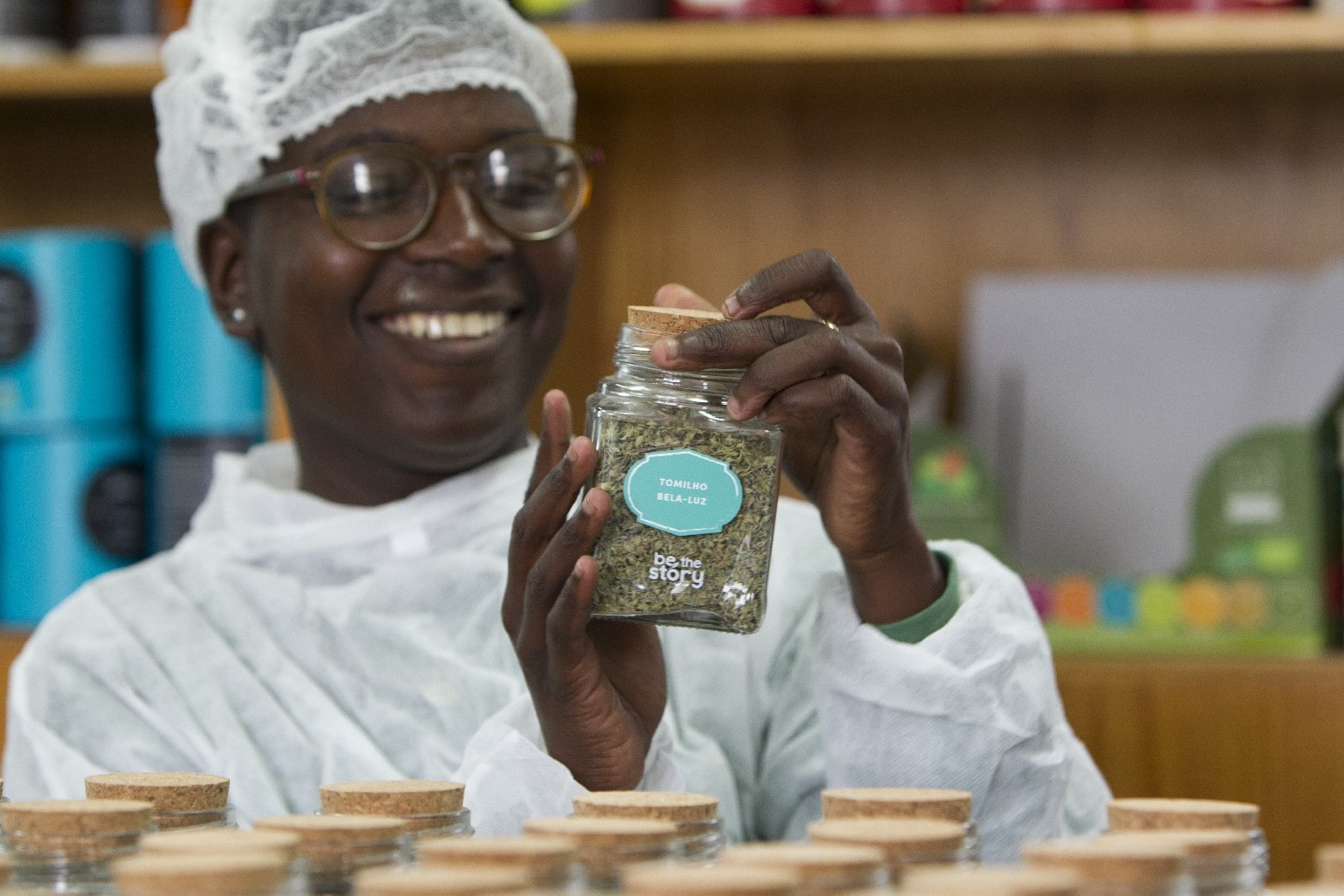
Packaging bela-luz thyme for a special project
